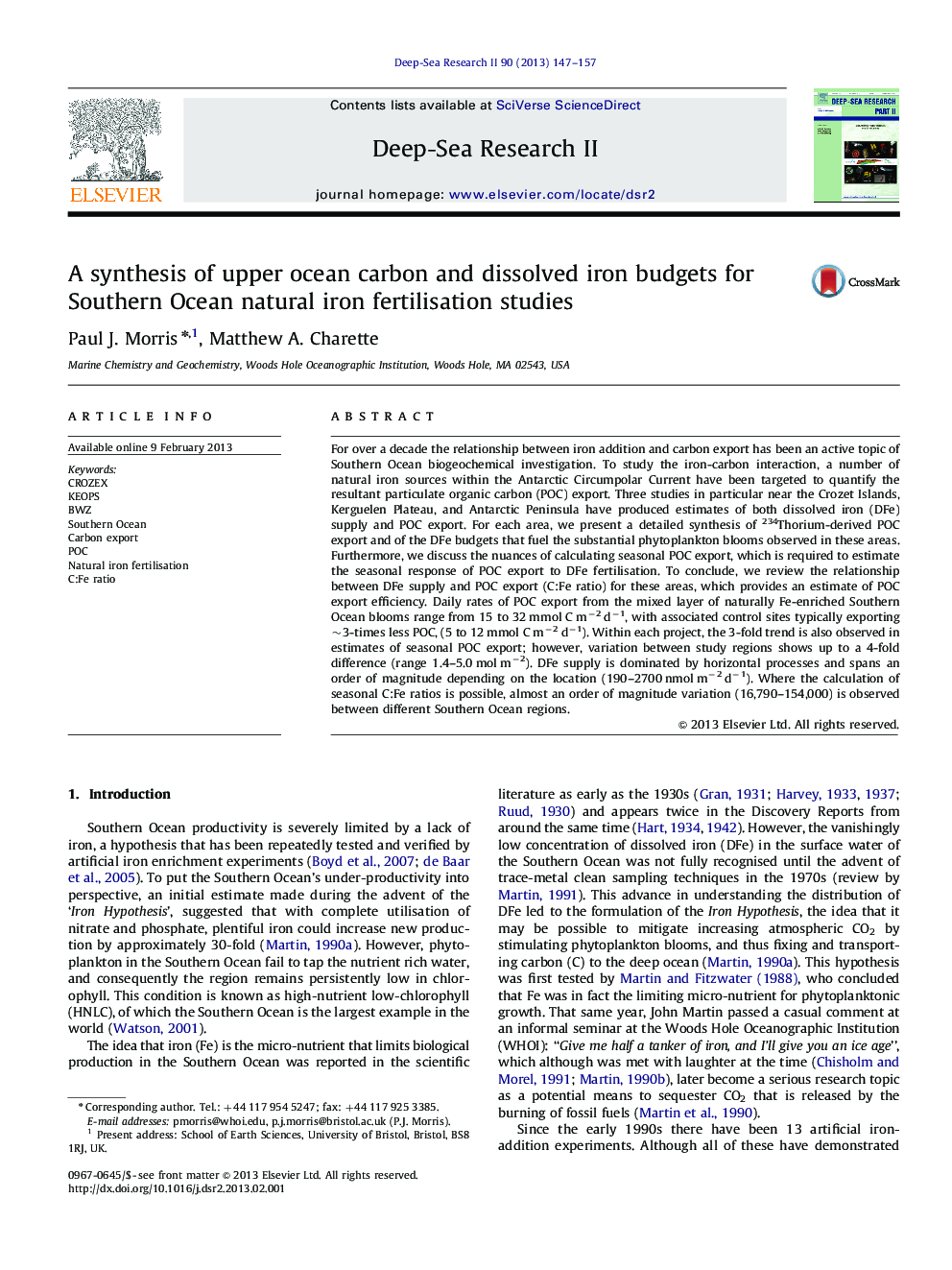| Article ID | Journal | Published Year | Pages | File Type |
|---|---|---|---|---|
| 4536624 | Deep Sea Research Part II: Topical Studies in Oceanography | 2013 | 11 Pages |
For over a decade the relationship between iron addition and carbon export has been an active topic of Southern Ocean biogeochemical investigation. To study the iron-carbon interaction, a number of natural iron sources within the Antarctic Circumpolar Current have been targeted to quantify the resultant particulate organic carbon (POC) export. Three studies in particular near the Crozet Islands, Kerguelen Plateau, and Antarctic Peninsula have produced estimates of both dissolved iron (DFe) supply and POC export. For each area, we present a detailed synthesis of 234Thorium-derived POC export and of the DFe budgets that fuel the substantial phytoplankton blooms observed in these areas. Furthermore, we discuss the nuances of calculating seasonal POC export, which is required to estimate the seasonal response of POC export to DFe fertilisation. To conclude, we review the relationship between DFe supply and POC export (C:Fe ratio) for these areas, which provides an estimate of POC export efficiency. Daily rates of POC export from the mixed layer of naturally Fe-enriched Southern Ocean blooms range from 15 to 32 mmol C m−2 d−1, with associated control sites typically exporting ∼3-times less POC, (5 to 12 mmol C m−2 d−1). Within each project, the 3-fold trend is also observed in estimates of seasonal POC export; however, variation between study regions shows up to a 4-fold difference (range 1.4–5.0 mol m−2). DFe supply is dominated by horizontal processes and spans an order of magnitude depending on the location (190–2700 nmol m−2 d−1). Where the calculation of seasonal C:Fe ratios is possible, almost an order of magnitude variation (16,790–154,000) is observed between different Southern Ocean regions.
